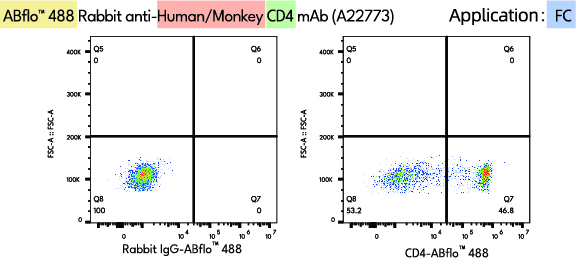Choosing the right flow cytometry antibody is one of the key factors to ensure a successful flow experiment. When selecting flow cytometry antibodies, the following key points should be considered:
- Determine the target to be detected, such as the expression location of the target antigen in the target cells (membrane expression, intracellular expression), and pay attention to the antigen selection section provided by the manufacturer.
- Determine the species of the experimental samples.
- Check if the antibody datasheet indicates the species to be detected and its suitability for flow cytometry applications.
- Whenever possible, choose commercially available validated antibodies for titration to reduce experimental steps and procedures.
With the continuous advancement of flow cytometers and the increasing variety of fluorescent dyes, multicolor flow cytometry offers more possibilities. Its advantages include the ability to simultaneously detect multiple markers on single cells, gather comprehensive cellular experimental data, and achieve more precise identification of cell populations. Furthermore, the demand for smaller sample volumes and higher sample throughput has significantly enhanced the efficiency of flow cytometry experiments. However, the detection of a larger number of antigens and fluorescent dyes adds complexity to the design of multicolor flow cytometry panels. When designing a flow cytometry panel, careful consideration should be given to the following factors:
- Instrument configuration: Prior to panel design, it is essential to understand the configuration of your instrument (lasers, filters).
- Fluorescence intensity: Different dyes have varying fluorescence intensity, which can be compared using stain index. Higher stain index indicates brighter fluorescence.
- Antigen expression and dye pairing: low expressed antigens can be paired with brighter fluorescent dyes, while high expressed antigens can be paired with weaker fluorescent dyes.
- Minimize spectral overlap: When combining different fluorescent dyes in different channels, choose dyes with minimal overlap in emission spectra.
- Fluorescent interference: Fluorescent dyes that interfere with each other can be used to label different cells, and then each population can be gated and analyzed separately.
- Cell viability detection dyes: Flow cytometry panels should include cell viability detection dyes to exclude dead cells and cell debris.


